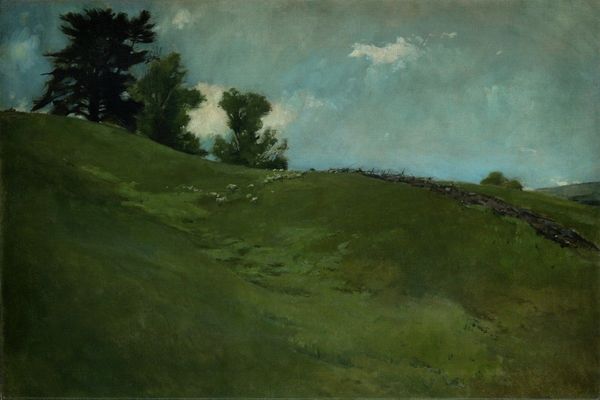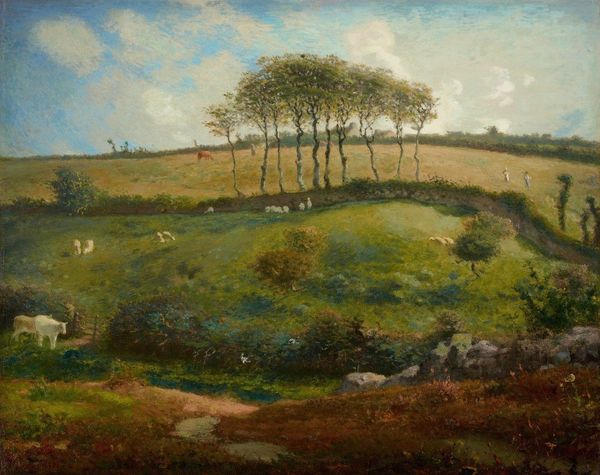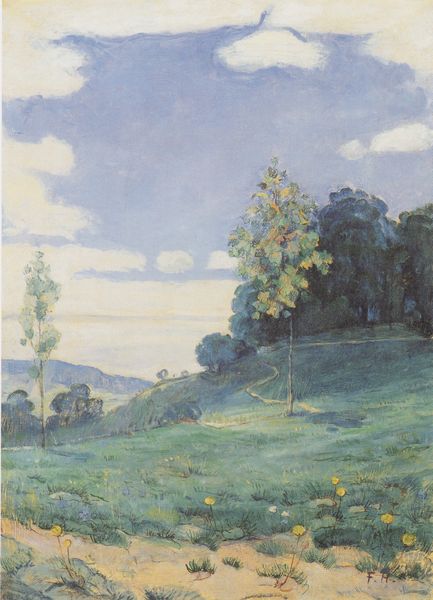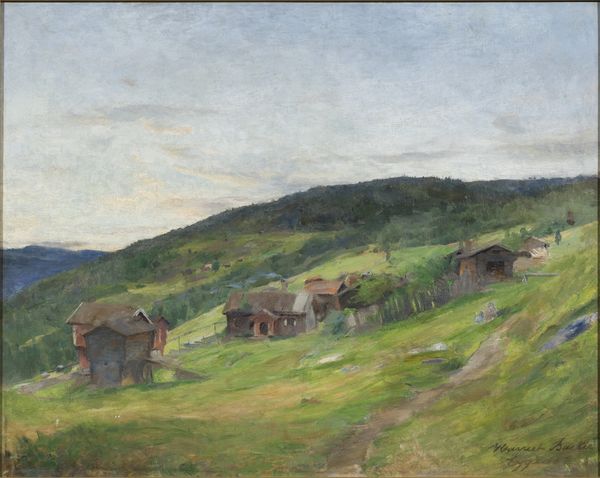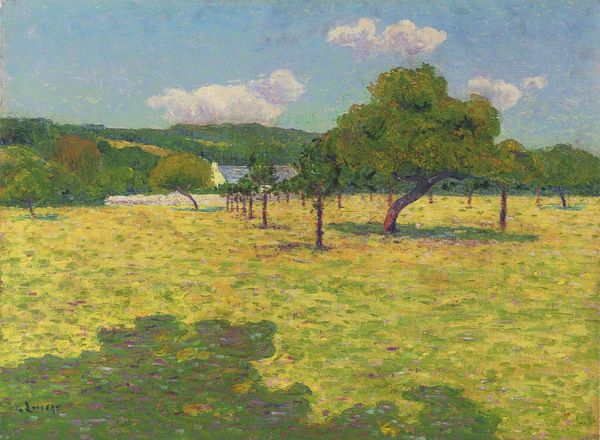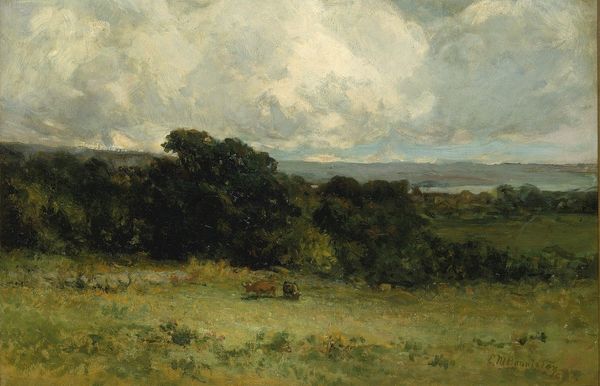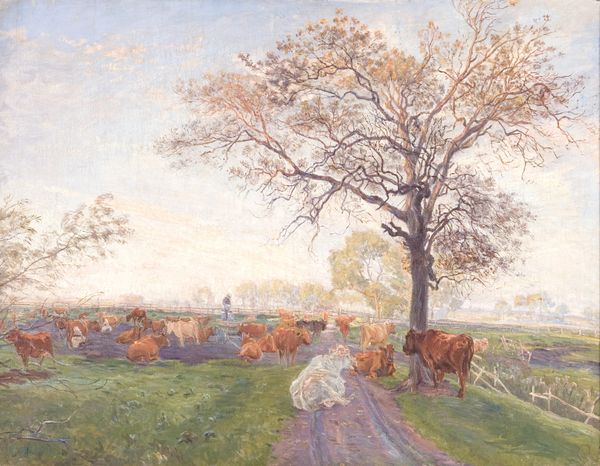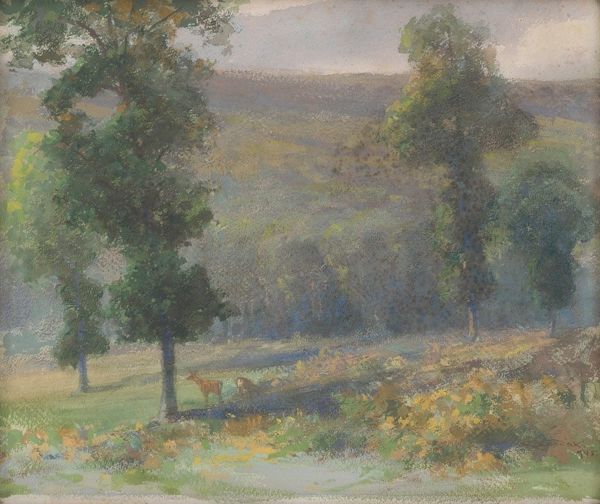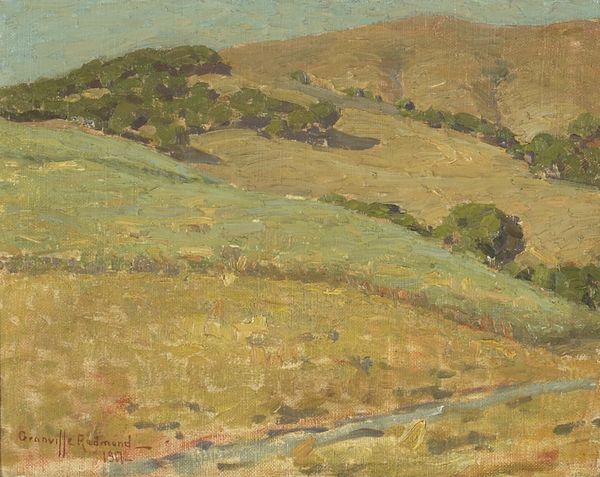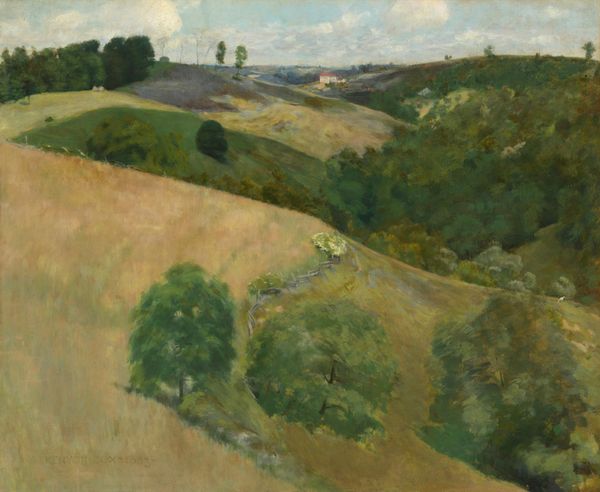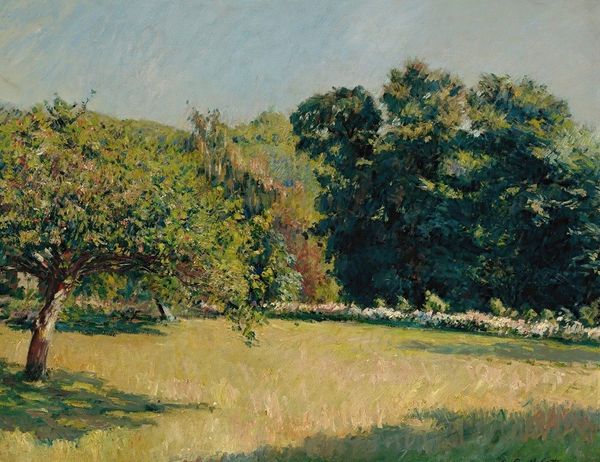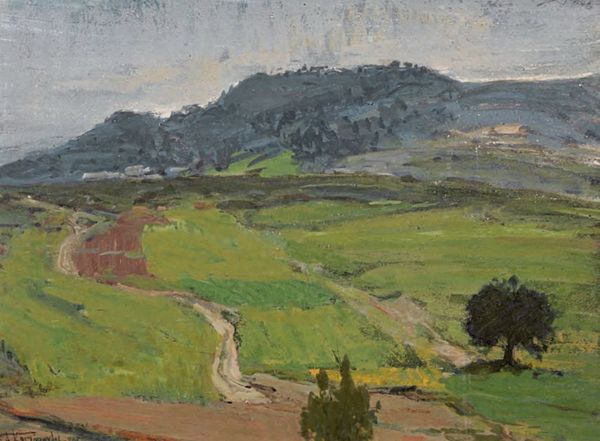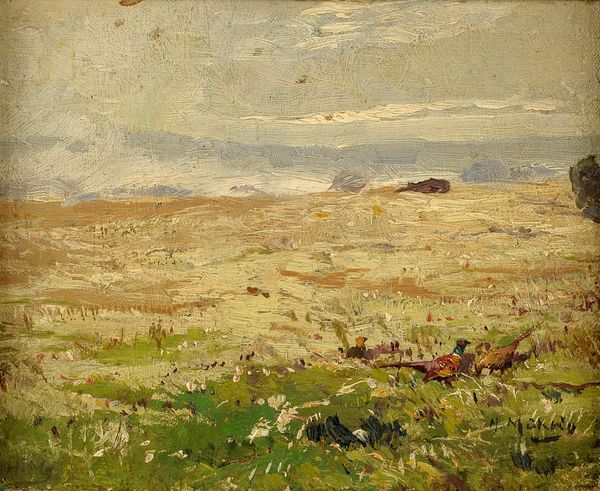
Dimensions: painted surface: 60.8 × 84.77 cm (23 15/16 × 33 3/8 in.) overall: 61.38 × 85.73 cm (24 3/16 × 33 3/4 in.) framed: 91.44 × 118.11 × 15.24 cm (36 × 46 1/2 × 6 in.)
Copyright: National Gallery of Art: CC0 1.0
Julian Alden Weir painted "Obweebetuck" with oil on canvas at an unknown date. This tranquil landscape reflects the late 19th-century American art world's engagement with Impressionism, a style originating in France that prioritizes the fleeting effects of light and atmosphere. But beyond its formal qualities, this painting speaks to broader cultural shifts. Weir's choice of subject, a serene rural scene, connects to the burgeoning American art market's desire for idyllic representations of the nation. As industrialization rapidly transformed urban centers, artists like Weir offered nostalgic visions of agrarian life, subtly reinforcing the social and political status quo. The presence of a cow grazing peacefully further underscores this romanticized vision. Understanding this artwork, therefore, requires us to consider not only its aesthetic features but also the social conditions and institutional forces that shaped its production and reception. Primary source materials from the period, such as exhibition catalogues, critical reviews, and artists' letters, can offer invaluable insights into the cultural meanings embedded within this seemingly simple landscape.
Comments
No comments
Be the first to comment and join the conversation on the ultimate creative platform.
